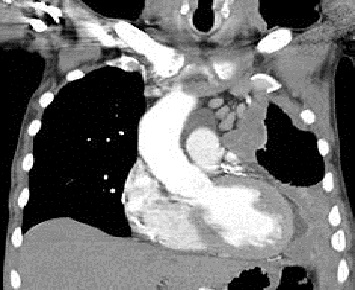Live in USA
 |
Mesothelioma (or, more precisely, malignant mesothelioma) is a rare form of
cancer that develops from cells of the mesothelium, the protective lining that
covers many of the internal organs of the body. Mesothelioma is most commonly
caused by exposure to asbestos.1 The most common anatomical site for
mesothelioma is the pleura (the outer lining of the lungs and internal chest
wall), but it can also arise in the peritoneum (the lining of the abdominal
cavity), the pericardium (the sac that surrounds the heart),2 or the tunica
vaginalis (a sac that surrounds the testis).
Most people who develop
mesothelioma have worked in jobs where they inhaled or ingested asbestos fibers,
or were exposed to airborne asbestos dust and fibers in other ways. Washing
clothes of a family member who worked with asbestos also creates a risk for
developing mesothelioma.3 Unlike lung cancer, there seems to be no association
between mesothelioma and tobacco smoking, but smoking greatly increases the risk
of other asbestos-induced cancers.4
Signs and symptoms of mesothelioma
include shortness of breath due to pleural effusion (fluid between the lung and
the chest wall), chest wall pain and constitutional signs such as unexplained
weight loss. The diagnosis may be suspected based on chest X-ray and CT scan
findings, but must be confirmed either by examining serous effusion cytology or
with a biopsy (removing a sample of the suspicious tissue). A thoracoscopy
(inserting a tube with a camera into the chest) can be used to acquire biopsy
material, and allows the introduction of substances such as talc to obliterate
the pleural space (a procedure called pleurodesis), preventing more fluid from
accumulating and pressing on the lung. Despite treatment with chemotherapy,
radiation therapy or sometimes surgery, mesothelioma carries a poor prognosis.
Research about screening tests for the early detection of mesothelioma is
ongoing.
Working with asbestos is the major risk factor for mesothelioma.6 In
the United States, asbestos is the major cause of malignant mesothelioma7 and
has been considered "indisputably"8 associated with the development of
mesothelioma. Indeed, the relationship between asbestos and mesothelioma is so
strong that many consider mesothelioma a ˇ°signalˇ± or ˇ°sentinelˇ± tumor.9101112 A
history of asbestos exposure exists in most cases. However, mesothelioma has
been reported in some individuals without any known exposure to asbestos. In
rare cases, mesothelioma has also been associated with irradiation, intrapleural
thorium dioxide (Thorotrast), and inhalation of other fibrous silicates, such as
erionite. Some studies suggest that simian virus 40 (SV40) may act as a cofactor
in the development of mesothelioma. This has been confirmed in animal
studies,1314 but studies in humans are inconclusive.
Asbestos was known in
antiquity, but it was not mined and widely used commercially until the late 19th
century. Its use greatly increased during World War II. Since the early 1940s,
millions of American workers have been exposed to asbestos dust. Initially, the
risks associated with asbestos exposure were not publicly known. However, an
increased risk of developing mesothelioma was later found among shipyard
workers, people who work in asbestos mines and mills, producers of asbestos
products, workers in the heating and construction industries, and other
tradespeople. Today, the official position of the U.S. Occupational Safety and
Health Administration (OSHA) and the U.S. EPA is that protections and
"permissible exposure limits" required by U.S. regulations, while adequate to
prevent most asbestos-related non-malignant disease, they are not adequate to
prevent or protect against asbestos-related cancers such as mesothelioma.17
Likewise, the British Government's Health and Safety Executive (HSE) states
formally that any threshold for exposure to asbestos must be at a very low level
and it is widely agreed that if any such threshold does exist at all, then it
cannot currently be quantified. For practical purposes, therefore, HSE assumes
that no such "safe" threshold exists. Others have noted as well that there is no
evidence of a threshold level below which there is no risk of mesothelioma.18
There appears to be a linear, dose-response relationship, with increasing dose
producing increasing disease.19 Nevertheless, mesothelioma may be related to
brief, low level or indirect exposures to asbestos.8 The dose necessary for
effect appears to be lower for asbestos-induced mesothelioma than for pulmonary
asbestosis or lung cancer.8 Again, there is no known safe level of exposure to
asbestos as it relates to increased risk of mesothelioma.
Download